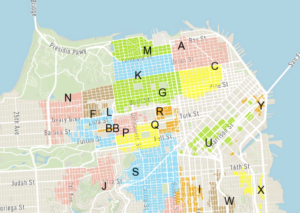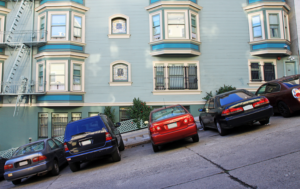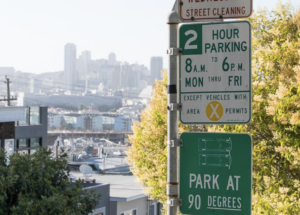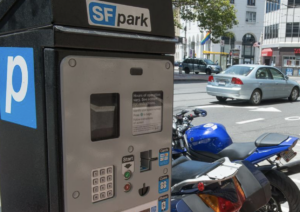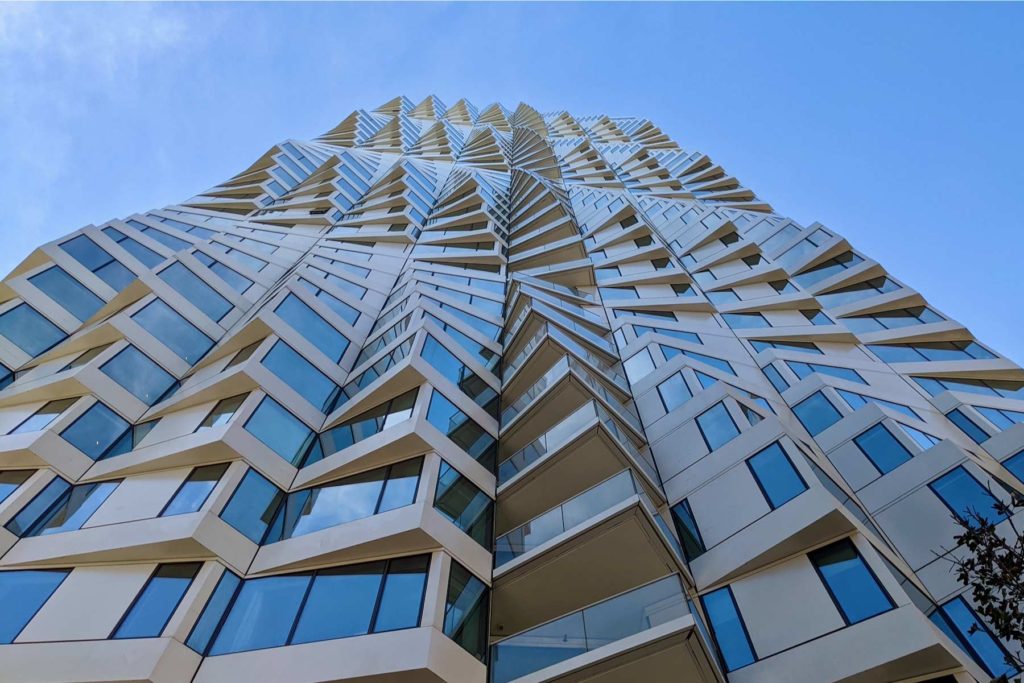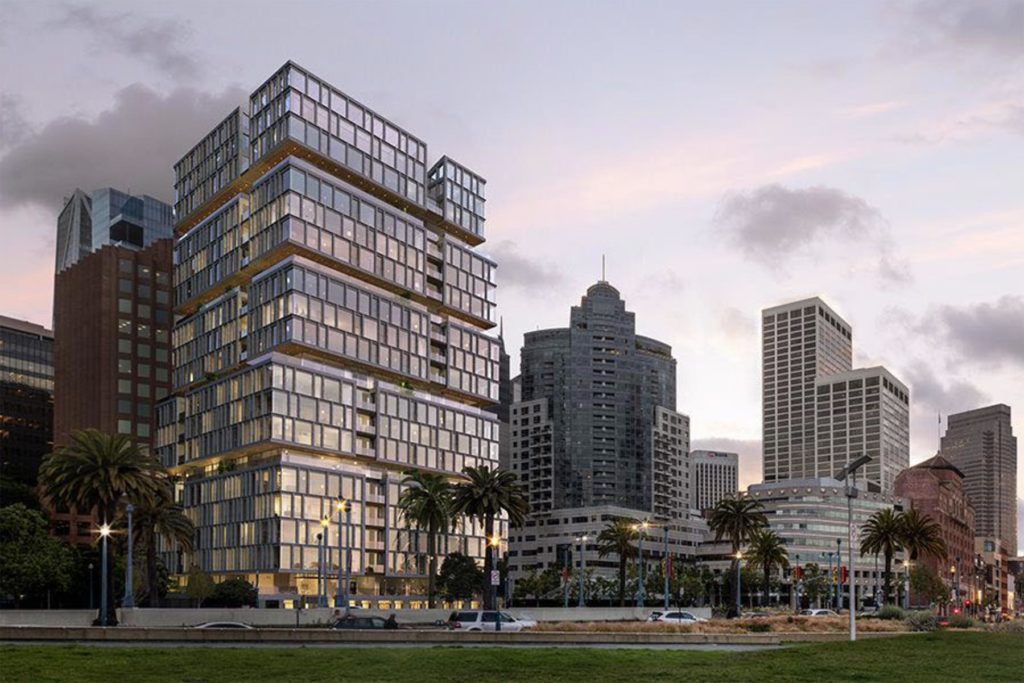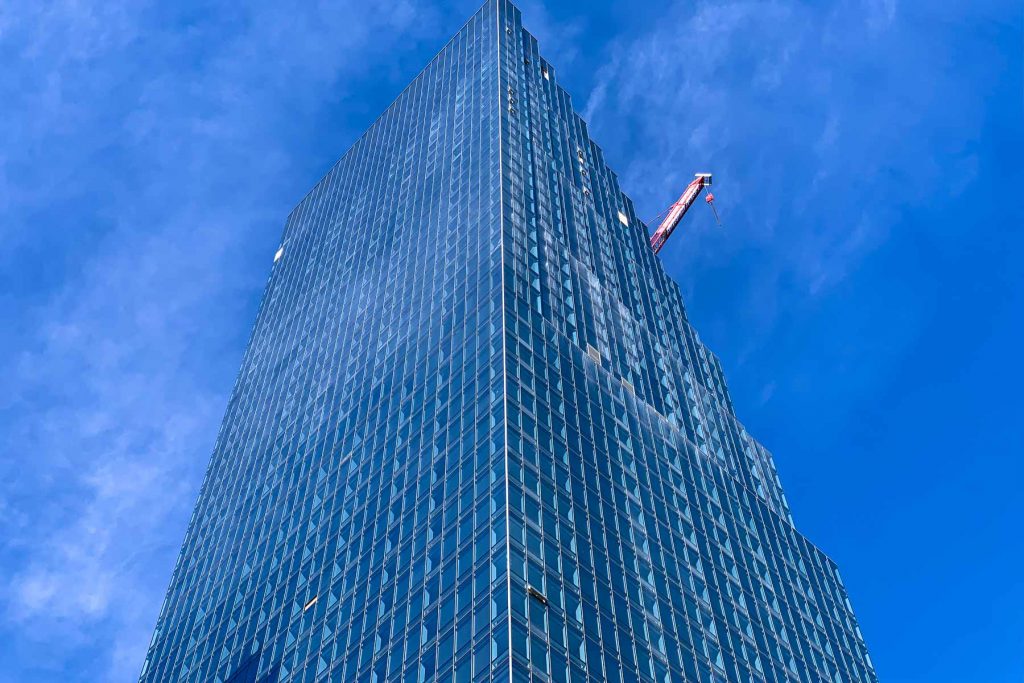The Ultimate Guide to Parking in San Francisco
Why is parking in San Francisco so confusing? The answer lies in that San Francisco aspires to be a transit-first city, prioritizing walking, biking and public transportation over the use of private vehicles. Part of boosting public transportation is making transit preferable — in reliability, cost and convenience — to owning a private vehicle. The downside is that to nudge you toward walking, biking or taking a bus, the parking powers-that-be must make it tough to keep and park a private vehicle in the city. If it feels like the city is trying to punish you for driving around in a car, that’s because it is. The dizzying number of rules that govern parking in San Francisco are all part of the transit-first push to discourage driving.
And not only does this draconian practice up the appeal of buses, trains and bikes, it also makes some major bank for the city. San Francisco Municipal Transportation Agency says the 1.5 million parking and transit citations it issues annually generate a whopping $90 million in revenue — nearly a quarter of SFMTA’s operating budget. Where does the money from parking tickets go? These fines funnel back into the system to improve public transit, funding things from employee wages and retiree pensions to keeping buses and streets in good repair.
If parking in San Francisco feels like a gamble in which the house always wins, let us help even those odds, or, better yet, turn them to your favor. Read on for the parking pitfalls that trip up even the most grizzled locals, and ways to keep out of trouble when you’re parking in San Francisco.
Check for parking signs — and know what they mean
Street signs will generally give you the information you need to know, so always check for them before parking. It’s good practice to look up and down the block 100 feet in both directions for any you may have missed. Here are the most common signs that pertain to parking in San Francisco.
Street Cleaning signs
Residential streets are usually cleaned during the day, while commercial streets are swept overnight. Street cleaning dates and times are clearly marked on each city block, so check those when you park to make sure you’re in the clear.
Time Limit signs
Parking in residential neighborhoods comes with time limits. Read these signs carefully because they can be confusing, and the endless variations will keep you on your toes. The most important things to pay attention to are the time limit itself, and the days and hours that time limit is in effect. When in doubt, park somewhere else.
Tow-Away/No Stopping signs
Certain areas where it’s often legal to park become tow-away zones during rush hours in order to keep traffic moving. Tow-away restrictions will be posted in red on signs and on parking meters. Parking in these zones never ends well, so don’t risk it.
Pay attention to the color-coded curbs
A city as colorful as ours has curbs to match. San Francisco’s color-coded curbs denote zones that are there for the loading and unloading of people and goods — but potentially not you and your goods. You risk a parking ticket and being towed if you park where you shouldn’t, or when parking is prohibited, and who’s got time for that? Here are the colors, and what they mean.
- Red = Nope. When it comes to parking, red is the universal color for “avoid at all costs,” and San Francisco’s red curbs are no different. These are no-parking zones — at any time or under any circumstance — and you’ll commonly find them near fire hydrants, bus stops and driveways.
- Blue = Disability-accessible. As is pretty common elsewhere, blue curbs in San Francisco earmark parking spaces for people with disabilities. Blue zones are in effect 24 hours a day every day — just make sure those prescribed license plates and parking placards are valid and properly displayed to avoid trouble.
- Green = 30 minutes max (but probably less). Green curbs are for short-term parking, with limits of 10, 15 or 30 minutes. If it’s not spelled out, just assume it’s a 10-minute limit. You’ll find these most often near post offices, ATMs and other places meant for popping into quickly.
- White = Stopping only. White curbs are for loading and unloading passengers during the hours displayed on the signs or curbs. Parking here is limited to five minutes, and some are tow-away zones and can be especially risky. You’ll find these where large numbers of people are regularly dropped off or picked up, like hospitals, schools and government buildings.
- Yellow = Delivery trucks only. Yellow curbs are for the loading and unloading of commercial vehicles. They are available only to vehicles with commercial license plates during the hours displayed on signs or curbs. Pro tip: running an errand for work does not qualify you for yellow-zone parking.
- Unpainted = Public parking. Curbs without a color designation are open for short-term, public parking for any vehicle. These parking spots may still be subject to restrictions displayed on signs or curbs, so you’ll still want to check for any caveats.
Outside of posted effective hours, green, white, yellow and unpainted curbs revert to general public parking. But red and blue zones are always in effect.
Be mindful of street-cleaning hours
San Francisco keeps its streets tidy with regular street cleaning, and thorough sweeping requires a couple hours with no parked cars. Street cleaning dates and times are clearly marked on each city block, usually as two-hour exclusions on certain days of the week. Spoiler alert: the bulk of San Francisco parking tickets issued each year are for street-sweeping violations, so this is where you’re most likely to slip up.
Each street sweeper is preceded by a fleet of parking enforcement officers who ticket any offending vehicles. Once the street sweeper and its meter-reading friends have passed, you’re free to park on that block, even if the time exclusion hasn’t elapsed. But don’t take any chances if you haven’t seen the sweeper pass with your own eyes.
San Francisco keeps its streets tidy with regular street cleaning, and thorough sweeping requires a couple hours with no parked cars. Street cleaning dates and times are clearly marked on each city block, usually as two-hour exclusions on certain days of the week. Spoiler alert: the bulk of San Francisco parking tickets issued each year are for street-sweeping violations, so this is where you’re most likely to slip up.
Each street sweeper is preceded by a fleet of parking enforcement officers who ticket any offending vehicles. Once the street sweeper and its meter-reading friends have passed, you’re free to park on that block, even if the time exclusion hasn’t elapsed. But don’t take any chances if you haven’t seen the sweeper pass with your own eyes.
Curbing your wheels
Curbing your wheels is key when you park in a city as hilly as San Francisco. If your brakes fail or your parked car gets hit, you don’t want it careening into traffic or people, right? It’s much safer for all involved if it rolls into the curb and stops there. So, when you park, simply point your front tires so that they will hit the curb if your car takes a ghost ride.
If you need a longer refresher, here’s how to curb your tires:
- When parking facing downhill, turn your front tires toward the curb.
- When parking facing uphill, turn your front tires away from the curb.
- Either way, let your vehicle roll a few inches, so that your front tire gently rests against the curb.
- When there is no curb — whether facing downhill or up — turn your front tires such that the vehicle will roll away from the center of the road if your brakes fail or your car’s hit.
- Always leave your car in park, and set your parking brake.
A note on hills: City law requires you to curb your wheels when parking on any slope exceeding 3%. That’s a small figure — just 1.72 degrees on a protractor — and may be tough to discern. You can confirm the slope of any street in San Francisco here, but savvy drivers just assume all street parking in San Francisco is on a slope and curb their wheels as outlined above.
When your time’s up, move your car a block away
Yep, drive it to another block entirely. Just pulling forward into a nearby spot won’t cut it, as city law requires you to move at least one-tenth of a mile, or about 500 feet, when you’ve used up your allowed time in a zone. And, whatever you do, don’t simply drive around the block and then park in the same space you just left. That’s no more effective than not moving at all.
Never park anywhere for more than 72 hours
In a residential neighborhood, the time limit is usually two hours. Why only two hours? This acts to give residents and business owners reliable access to parking in their own neighborhoods, while also accommodating visitors with short-term parking.
In the absence of signage to the contrary, your car can stay put for a maximum of 72 hours, per California law. You’ll want to be gone before that three-day span elapses, though. Not only is it the law, but you’re begging for a break-in leaving your car unattended for so long.
Don’t block driveways, garages, sidewalks, crosswalks or disability-access ramps
Always check your front and rear bumpers to make sure they are not extending into a driveway, sidewalk, crosswalk or color zone. Every block has tons of these, and a measly inch is all it would take for you to run afoul of this one. If you’re ever in doubt, don’t park there. Cutting it too close can come with a steep price.
Don’t block driveways, garages, sidewalks, crosswalks or disability-access ramps
Always check your front and rear bumpers to make sure they are not extending into a driveway, sidewalk, crosswalk or color zone. Every block has tons of these, and a measly inch is all it would take for you to run afoul of this one. If you’re ever in doubt, don’t park there. Cutting it too close can come with a steep price.
Park within 18 inches of the curb
You may have noticed that San Francisco is small, crowded and packed in tight. Hug the curb as closely as possible when you park, making sure your tires are within 18 inches of the curb. Parking any further away from the curb can leave you hanging into the street, slowing down traffic and resulting in a ticket or even a crash.
Transbay CFD Buildings
